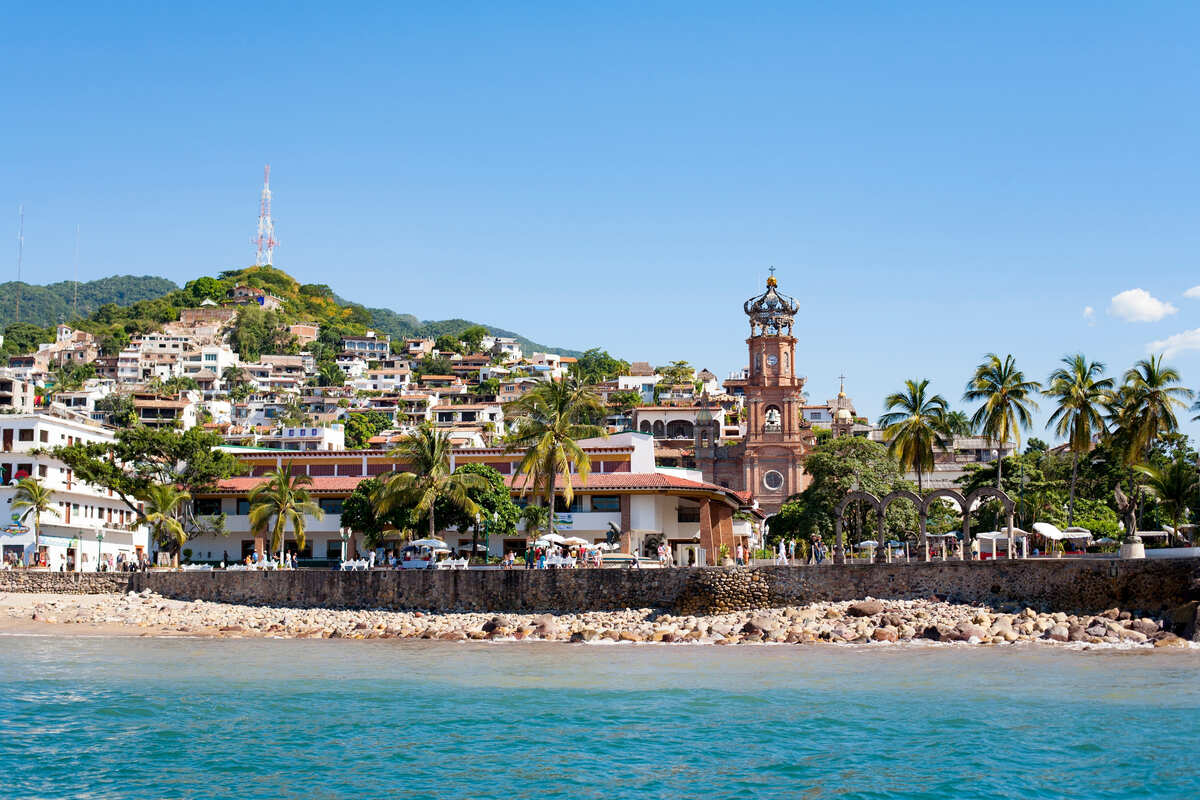
This Is The Safest Beach Destination In Mexico According To New Report
Last Updated
Mexico may be every American’s favorite sunny destination, thanks to its year-round warm weather, vibrant and inviting culture, and tropical atmosphere, but there’s no denying that, in spite of its surging popularity, safety remains a primary concern for visitors.
Be it the mainstream media’s misinformation campaigns or travel advisories that fail to accurately depict risks on the ground, many U.S. visitors have developed an irrational fear about vacationing South of the border.


We can’t exactly blame them when every violent event that takes place in Mexico, however sporadic and far from the usual touristy spots, makes it to the front page in the United States, even when security is tight and risks for foreigners remain minimal.
One such example is Puerto Vallarta, a coastal city in Jalisco, a state in Mexico many would consider dangerous due to gang activity, but one that has, in fact, been named the safest beach destination in the entire country:
Is Puerto Vallarta Actually A Lot Safer Than It Gets Credit For?


Puerto Vallarta is one of the most popular beach zones in Mexico, famous for its highly-developed resort strip, Pacific beaches, and LGBT-friendly Romantic Zone, a picturesque, cobbled, historic district where colonial tradition and bohemia go hand in hand.
Americans love it for the laid-back coastal vibes, the great local food, and of course, the long miles of sand separating PV from the azure ocean, but there has always been one big downside for overcautious tourists: its state considered a Level 3 destination by American authorities.


In simple terms, U.S. authorities urge Americans to ‘reconsider travel’ to Jalisco as they may expose themselves to higher levels of crime and even risk kidnapping.
Still, PV remains Mexico’s third most-booked sunny vacation after Cancun and Los Cabos, and we find it hard to believe that would still be the case should crime be as rampant as it is made out to be.
Now, we have confirmed our suspicion Puerto Vallarta and its surrounding beach zone is safer than it gets credit for.
Over 80% Of Residents Find PV Safe To Live In


Based on new data collected by ENSU, Mexico’s National Urban Public Security Survey is one of the most reliable parameters for assessing safety levels that there are. The vast majority of PV residents aged 18 and over consider it a safe city to live in.
More specifically, only 19.4 percent of residents perceive it as unsafe, against 80.6 percent who have reported feeling safe residing locally.
It is worth noting that researchers have evaluated safety perceptions for local residents, not tourists.


Still, the fact that the pata-salada (how the Vallarta-born are called) are adamant their city is safe – and they are typically living in suburban zones themselves, not holed up in heavily-guarded five-star resorts – should only serve as proof gringos should be even less concerned.
Additionally, Puerto Vallarta is the safest beach destination in Mexico, charting higher than every other coastal hub on ENSU’s ranking, including the aforementioned Cancun and Los Cabos.
By extenstion, it is the second safest municipality in all of Mexico.


It places behind only Benito Juarez, which has a negative safety perception rate of only 15.2 percent, but interestingly enough, it charts higher than Merida, in Yucatan, and San Francisco de Campeche, in Campeche, often considered Mexico’s safest state capital.
Both of these cities were added to the U.S. State Department’s Level 1 listing, meaning Americans can exercise normal precautions when visiting.
Despite PV’s excellent results in ENSU’s latest assessment, it still retains its Level 3 status, so what isn’t adding up?
Travel Advisories Are Just That: Advisory


The State Department is known for being exceedingly conservative when it comes to assessing safety risks for different destinations.
In the case of Mexico, in particular, each state is awarded its own classification as opposed to the whole country: no other destination worldwide has its states, provinces, or other forms of domestic administrative division evaluated differently for the purposes of risk assessment.
As every state in Mexico is analyzed individually, this can lead to more scrutiny and, in some cases, a hyperfocus on negative events affecting them.


The state of Quintana Roo, home to Cancun and Tulum, infamously had a travel alert for crime and kidnappings in 2022, even though one single kidnapping case was reported throughout that entire year.
It took months and a series of remarks by the Mexican President until the kidnapping warning was removed, bringing into question the timeliness of these advisories.
That’s not to say Jalisco’s inclusion in the Level 3 listing is unwarranted, as American authorities may have access to sensitive information the general public is not aware of, but it’s only natural that new questions are put forth when different, equally reliable sources present a different viewpoint.


In sum, being somewhat cautious when visiting Mexico as a whole can do no harm.
While it’s unlikely you will be affected by petty or violent crime vacationing in beautiful Puerto Vallarta, especially when the state of Jalisco has deployed more police to protect tourists last year, avoid displaying unnecessary signs of wealth, walking alone in poorly-lit areas after dark, and steer clear of far-out, dodgy neighborhoods.
Read More:
Top 5 Travel Insurance Plans Starting At $10 Per Week
How To Easily Earn Points For Free Travel
↓ Join Our Community ↓
The Travel Off Path Community FB group has all the latest reopening news, conversations, and Q&A’s happening daily!


SUBSCRIBE TO OUR LATEST POSTS
Enter your email address to subscribe to Travel Off Path’s latest breaking travel news, straight to your inbox.
This article originally appeared on TravelOffPath.com
